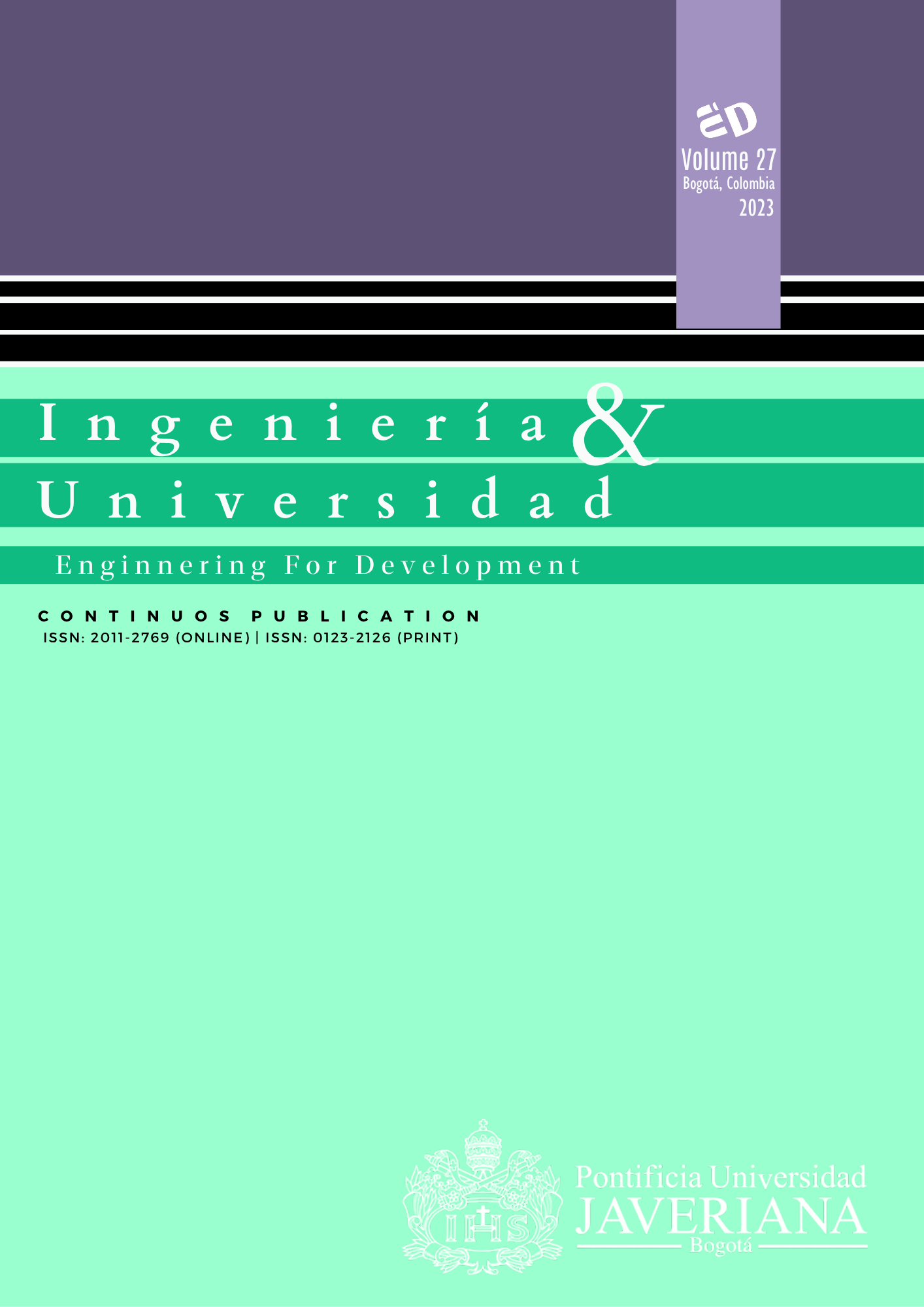Abstract
Currently, there is great interest in providing energy autonomy and mobility to electronic devices. For instance, the need for batteries in miniaturized implants can be bypassed by the use of wireless power transfer systems based on efficient asymmetrical inductive links. As an optimization result, the transmitter inductor operates near its self-resonance frequency. Objective: This article presents a novel circuit model of an asymmetric inductive link based on Planar Square One-Turn Inductors (PSOI). This model is based on a model of PSOI coils and a mutual induction expression, which were reported in previous works. Contrary, to the available models, the resulting circuit can model the link operation, even when its inductors operate close to its self-resonance frequencies. Additionally, a method to measure the level of asymmetric link coupling (i.e., factor A) using a conventional vector network analyzer is proposed. Materials and methods: The proposed model was simulated and tested experimentally using a study case, in which its transmitter PSOI operates near its self-resonance frequency. Results: The model predictions of the efficiency and factor A of the link under test were consistent with its full-wave electromagnetic simulations and the experimental values. Conclusions: The model captured the energy transfer process involved in the study case.
A. Whitmore, A. Agarwal, and L. Xu, “The internet of things, a survey of topics and trends,” Inform. Syst. Frontiers, vol. 17, no. 2, pp. 261–274, 2014.
S. Movassaghi, M. Abolhasan, J. Lipman, D. Smith, and A. Jamalipour, “Wireless body area networks: A survey,” IEEE J. Comm. Surveys & Tutorials, vol. 16, no. 3, pp. 1658–1686, 2014.
A. Fajardo and F. Rangel de Sousa, “A taxonomy for learning, teaching, and assessing wireless body area networks,” in Proc. IEEE 7th Latin American Symp. Circuits Syst. (LASCAS), 2016, pp. 179–182.
M. A. Hannan, S. Mutashar, S. A. Samad, and A. Hussain, “Energy harvesting for the implantable biomedical devices: issues and challenges,” Biomed. Eng. OnLine, vol. 13, no. 1, p. 79, 2014.
A. B. Amar, A. B. Kouki, and H. Cao, “Power approaches for implantable medical devices,” Sensors, vol. 15, no. 11, pp. 28 889–28 914, 2015.
X. Lu, P. Wang, D. Niyato, D. I. Kim, and Z. Han, “Wireless charging technologies: Fundamentals, standards, and network applications,” IEEE J. Comm. Surveys & Tutorials, vol. 18, no. 2, pp. 1413–1452, 2016.
M. Zargham and P. G. Gulak, “Fully integrated on-chip coil in 0.13 um cmos for wireless power transfer through biological media,” IEEE Trans. Biomed. Circuits Syst., vol. 9, no. 2, pp. 259–271, April 2015.
F. L. Cabrera and F. R. de Sousa, “Achieving optimal efficiency in energy transfer to a cmos fully integrated wireless power receiver,” IEEE Trans. Microw. Theory Tech., vol. 64, no. 11, pp. 3703–3713, 2016.
——, “Optimal design of energy efficient inductive links for powering implanted devices,” in IEEE Topical Conf. Biomed. Wireless Tech. Netw. Sensing Syst. (BioWireleSS), Jan 2014, pp. 37–39.
A. Fajardo, F. L. Cabrera, and F. R. de Sousa, “Characterization of high-Q inductors up to its self-resonance frequency for wireless power transfer applications,” IEEE Microw. and Wireless Comp. Lett., vol. 28, no. 12, pp. 1071–1073, 2018.
K. O., “Estimation methods for quality factors of inductors fabricated in silicon integrated circuit process technologies,” IEEE J. Solid-State Circuits, vol. 33, no. 8, pp. 1249–1252, Aug 1998.
R. Doldan, A. J. Gines, and A. Rueda, “Inductor characterization in rflc-vcos,” in IEEE 4th Latin Amer. Symp. Circuits Syst (LASCAS)., Feb2013, pp. 1–4.
A. Fajardo, F. R. de Sousa, F. L. Cabrera, V. Brusamarello, and R. Azambuja, “Scalable model of planar square one-turn inductors for wireless power transfer applications,” in 2018 IEEE Wireless Power Transfer Conf. (WPTC), 2018, pp. 1–4.
F. L. Cabrera, “Contributions on the optimization of wireless energy transfer efficiency for miniaturized electronic devices,” Ph.D. dissertation, Federal University of Santa Catarina, 2016.
A. Fajardo, “Contributions on the energy flow modeling in a self-sustainable wireless energy transfer system based on efficient inductive links,” Ph.D. dissertation, Federal University of Santa Catarina, 2018.
S. Arvas, “Spiral inductor model extraction: A survey of the field,” in IEEE Wireless Microwave Tech. Conf. (WAMICON), April 2012, pp.1–7.
S. Li and C. C. Mi, “Wireless power transfer for electric vehicle applications,” IEEE J. Emerging Select. Topics Power Electron., vol. 3, no. 1, pp. 4–17, March 2015.
T. Ohira, “What in the world is Q” IEEE Microwave Mag., vol. 17, no. 6, pp. 42–49, June 2016.
B. Razavi, RF microelectronics, 2nd ed. Prentice Hall New Jersey, 2011.
D. M. Pozar, Microwave Engineering 3e. Wiley, 2006.

This work is licensed under a Creative Commons Attribution 4.0 International License.
Copyright (c) 2024 Arturo Fajardo Jaimes, Fabian Leonardo Cabrera, Fernando Rangel de Sousa


